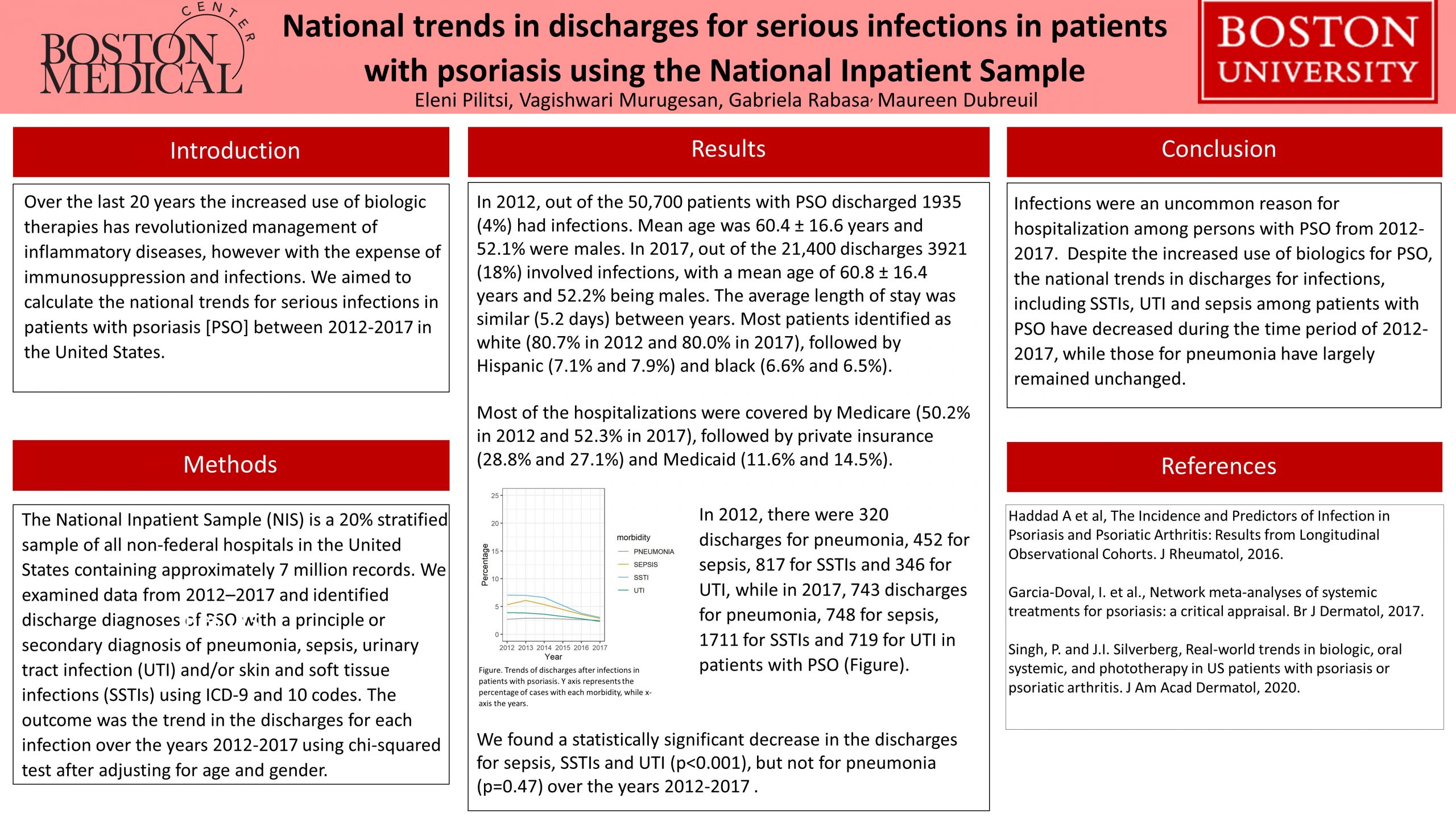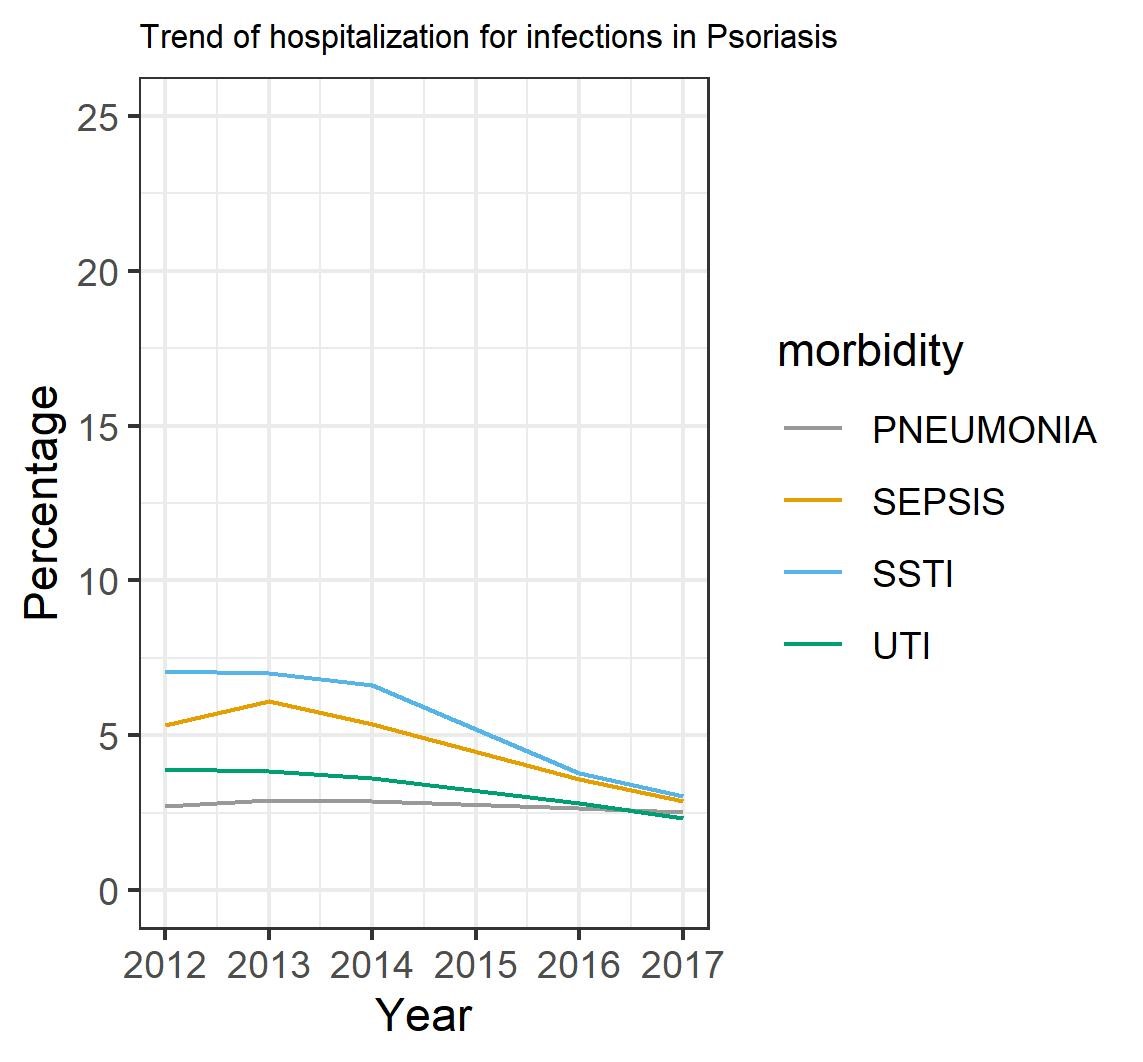Research Week 2022 – Eleni Pilitsi, MD

Category: Clinical research
Title: National trends in discharges for serious infections in patients with psoriasis using the National Inpatient Sample
Authors: Eleni Pilitsi1″*, MD, Vagishwari Murugesan2″*, MD, Gabriela Rabasa2, BS, Maureen Dubreuil2, MD, MSc
1Boston University/Boston Medical Center, Department of Medicine
2Boston University/Boston Medical Center, Department of Rheumatology
Introduction: Over the last 20 years the increased use of biologic therapies has revolutionized management of inflammatory diseases, however with the expense of immunosuppression and infections. We aimed to calculate the national trends for serious infections in patients with psoriasis [PSO] between 2012-2017 in the United States.
Methods: We utilized the national inpatient sample (NIS), which approximates a 20% stratified sample of all discharges from U.S. community hospitals, excluding rehabilitation and long-term acute care hospitals from 2012–2017. We identified patients discharged with any diagnosis of PSO and a principal or secondary discharge diagnosis of pneumonia, sepsis, urinary tract infection (UTI) and/or skin and soft tissue infections (SSTIs) based on ICD 9 and 10 codes. Our outcome was the trend in the discharges for each infection over the years 2012-2017 using chi-squared test after adjusting for age and gender.
Results: In 2012, 50,700 patients with PSO were discharged out of which 1935 (4%) with infections, with a mean age of 60.4 ± 16.6 years and 52.1% males. In 2017, there were 21400 discharges out of which 3921 (18%) involved infections, with a mean age of 60.8 ± 16.4 years and 52.2% males. The average length of stay was similar (5.2 days) between years. Most patients identified as white (80.7% in 2012 and 80.0% in 2017), followed by Hispanic (7.1% and 7.9%) and black (6.6% and 6.5%). Most of the hospitalizations were covered by Medicare (50.2% in 2012 and 52.3% in 2017), followed by private insurance (28.8% and 27.1%) and Medicaid (11.6% and 14.5%).
In 2012, there were 320 discharges for pneumonia, 452 for sepsis, 817 for SSTIs and 346 for UTI, while in 2017, 743 discharges for pneumonia, 748 for sepsis, 1711 for SSTIs and 719 for UTI in patients with PSO (Figure).
After standardization of 2012-2017 data for age and gender, we found a statistically significant decrease in the discharges for sepsis, SSTIs and UTI (p<0.001), but not for pneumonia (p=0.47).
Conclusion: Infections were an uncommon reason for hospitalization among persons with PSO from 2012-2017. Despite the increased use of biologics for psoriasis, the national trends in discharges for infections, including SSTIs, UTI and sepsis among patients with PSO have decreased during the time period of 2012-2017, while those for pneumonia have largely remained unchanged.

Figure. Trends of discharges after infections in patients with psoriasis. Y axis represents the percentage of cases with each morbidity, while x-axis the years.